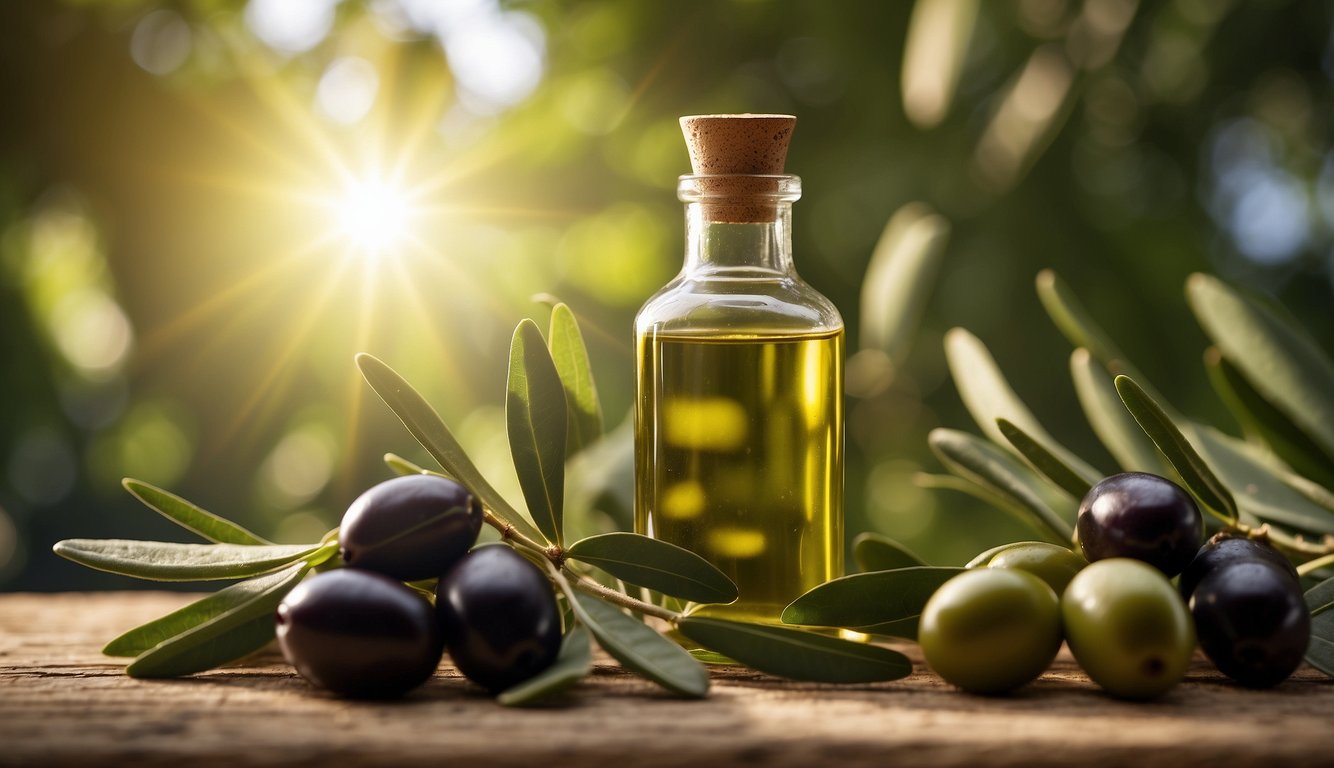Olive leaf extract is a powerful supplement with a rich history. Used for thousands of years, it offers numerous health benefits. Extracted from olive tree leaves, this natural supplement is packed with powerful antioxidants and anti-inflammatory compounds. It supports the immune system, lowers blood pressure and cholesterol, and may even prevent diabetes and cancer.
One of the key benefits of olive leaf extract is its ability to support heart health. According to a study published in the Journal of Medicinal Food, supplementing with olive leaf extract can help lower blood pressure and improve cholesterol levels in people with mild hypertension. Additionally, the anti-inflammatory properties of olive leaf extract may help reduce the risk of heart disease and stroke.
Another potential benefit of olive leaf extract is its ability to support the immune system. Research has shown that the antioxidants and anti-inflammatory compounds found in olive leaf extract may help boost the body’s natural defenses against infections and diseases. In fact, some studies have found that olive leaf extract may be effective against a range of viral and bacterial infections, including the common cold, flu, and even HIV.
Historical Context and Traditional Uses – Get The Best Here

Olive leaf extract has been used for thousands of years as a medicinal herb. The olive tree (Olea europaea) is native to the Mediterranean region, where it has been a staple of the Mediterranean diet for centuries. The leaves of the olive tree have been used in traditional medicine applications for many years.
Mediterranean Diet and Olive Leaf
The Mediterranean diet is a diet that is rich in fruits, vegetables, whole grains, and healthy fats. The diet has been shown to have numerous health benefits, including a reduced risk of heart disease, stroke, and certain types of cancer. Olive oil is a key component of the Mediterranean diet, and olive leaf extract is also a popular supplement among those who follow the diet.
Olive leaf extract is believed to have many of the same health benefits as olive oil, including anti-inflammatory and antioxidant properties. It has also been shown to have antimicrobial and anti-diabetic properties. These properties make it a popular supplement for those looking to improve their overall health and well-being.
Traditional Medicine Applications
The leaves of the olive tree have been used in traditional medicine applications for many years. In ancient Egypt, olive leaves were used to treat fevers and infections. In traditional Chinese medicine, olive leaves were used to treat coughs and sore throats.
Today, olive leaf extract is used to treat a variety of conditions, including high blood pressure, diabetes, and infections. It is also used as a natural remedy for the common cold and flu.
Overall, olive leaf extract has a long history of use in traditional medicine applications. While more research is needed to fully understand its potential health benefits, it is clear that olive leaf extract has many properties that make it a popular supplement for those looking to improve their overall health and well-being.
Active Compounds in Olive Leaf Extract
Olive leaf extract is a natural supplement that is derived from the leaves of the olive tree. It has been used for centuries for its various health benefits. The extract is rich in antioxidants, which help to protect the body from damage caused by free radicals.
Oleuropein and Polyphenols
One of the most notable active compounds found in olive leaf extract is oleuropein. Oleuropein is a polyphenol that has been shown to have antioxidant and anti-inflammatory properties. It is also believed to have antiviral and antibacterial effects.
Polyphenols are a group of compounds that are found in many plants. They are known for their antioxidant properties and have been shown to have a variety of health benefits. In addition to oleuropein, olive leaf extract contains a number of other polyphenols, including hydroxytyrosol, verbascoside, and luteolin.
Other Notable Antioxidants
In addition to polyphenols, olive leaf extract contains other notable antioxidants, including flavonoids. Flavonoids are a group of compounds that are found in many plants and are known for their antioxidant properties. They have been shown to have a variety of health benefits, including reducing inflammation and improving heart health.
Overall, the active compounds found in olive leaf extract work together to provide a variety of health benefits. They help to protect the body from damage caused by free radicals, reduce inflammation, and improve heart health.
Health Benefits of Olive Leaf Extract – Get The Best Here
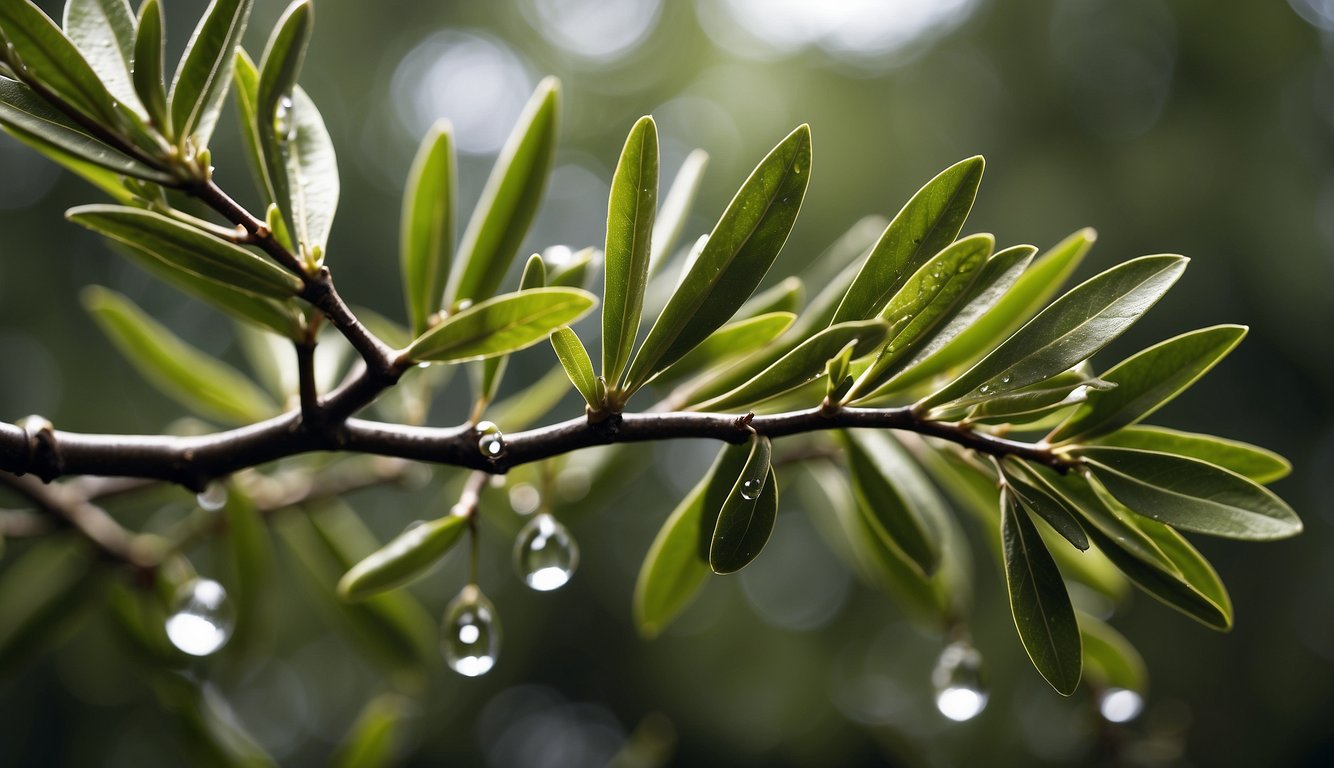
Olive leaf extract has been used for centuries for its medicinal properties. It is derived from the leaves of the olive tree, which is native to the Mediterranean region. The extract is rich in antioxidants and has several health benefits. Here are some of the benefits of olive leaf extract:
Cardiovascular Health Enhancement
Research shows that olive leaf extract helps prevent LDL (bad) cholesterol from building up in the arteries, which helps increase blood flow and lower blood pressure. This effect can enhance cardiovascular health [1].
Blood Pressure and Cholesterol Regulation
Olive leaf extract has been shown to reduce both blood pressure and cholesterol levels in several studies [1] [2]. This effect may be due to the presence of oleuropein, a compound found in the extract, which has been shown to have antihypertensive and cholesterol-lowering effects [3].
Diabetes and Blood Sugar Management
Olive leaf extract may help manage type 2 diabetes by improving insulin sensitivity and reducing blood sugar levels [1] [4]. This effect may be due to the presence of polyphenols, which have been shown to have antidiabetic effects [5].
Anti-Inflammatory and Antimicrobial Effects – Get The Best Here
Olive leaf extract has anti-inflammatory and antimicrobial effects, making it useful in the treatment of infections caused by bacteria and viruses [1]. The extract has been shown to be effective against a wide range of bacteria and viruses, including those that cause respiratory infections, urinary tract infections, and herpes [6].
Cancer Risk Reduction Potential
Olive leaf extract has been shown to have anti-cancer properties in several studies. The extract contains compounds that have been shown to inhibit the growth and spread of cancer cells [7]. However, more research is needed to determine the full extent of its anti-cancer potential.
Support for Weight Management – Get The Best Here
Olive leaf extract may support weight management by reducing inflammation and oxidative stress, which are associated with obesity [8]. The extract may also help regulate blood sugar levels, which can contribute to weight loss [4].
Neuroprotective Properties
Olive leaf extract has neuroprotective properties and may help prevent cognitive decline. The extract has been shown to improve memory and cognitive function in animal studies [9]. However, more research is needed to determine its effects on humans.
Olive leaf extract has several health benefits, including enhancing cardiovascular health, regulating blood pressure and cholesterol levels, managing diabetes, reducing inflammation and oxidative stress, and potentially reducing the risk of cancer. However, more research is needed to determine the full extent of its benefits.
Comparative Analysis – Get The Best Here

Olive Leaf Extract vs Olive Oil
While both olive leaf extract and olive oil are derived from the olive tree, they have different compositions and benefits. Olive leaf extract contains higher levels of bioactive compounds such as oleuropein, hydroxytyrosol, and tyrosol, which have been shown to have antioxidant, anti-inflammatory, and antimicrobial properties [1]. On the other hand, olive oil is mainly composed of monounsaturated fatty acids, which have been linked to improved heart health [2].
Comparison with Other Supplements
Compared to other supplements, olive leaf extract has been shown to have a unique set of benefits. For example, a study found that olive leaf extract was more effective than vitamin C and vitamin E in reducing oxidative stress in the body [3]. Another study found that olive leaf extract had stronger antimicrobial properties than grapefruit seed extract and echinacea [4].
However, it is important to note that more research is needed to fully understand the benefits of olive leaf extract compared to other supplements. Additionally, it is recommended to consult with a healthcare provider before starting any new supplement regimen.
Overall, while olive leaf extract shares some similarities with other olive-derived products and supplements, its unique composition and benefits make it a promising addition to a healthy lifestyle.
References:
- Comparative chemical composition and antioxidant activity of olive leaf extracts
- Olive Oil and Health: Summary of the II International Conference on Olive Oil and Health Consensus Report, Jaén and Córdoba (Spain) 2008
- Antioxidant and Antimicrobial Activities of Native Rosa spp. from British Columbia, Canada
- Comparative metabolic profiling of olive leaf extracts from twelve different cultivars collected in both fruiting and flowering seasons
Usage and Dosage Recommendations – Get The Best Here
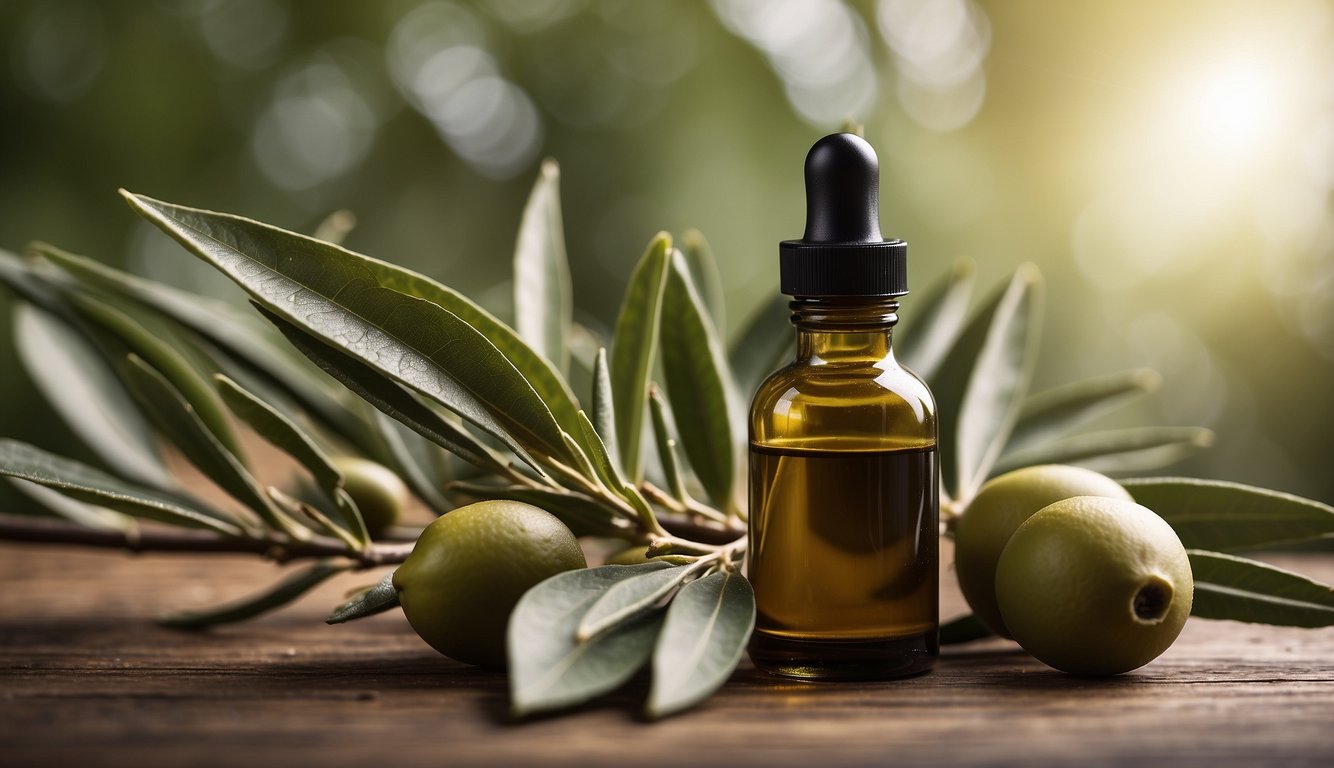
Forms of Olive Leaf Extract
Olive leaf extract is available in various forms, including capsules, tablets, powders, teas, and tinctures. The most common form of olive leaf extract is capsules, which are easy to take and usually come in doses ranging from 500-1000mg per capsule. Tablets are also available, but they may not be as effective as capsules due to their lower absorption rate.
Powders and teas are also available, but they may not be as convenient to take as capsules or tablets. Olive leaf extract tea can be made by steeping dried or fresh olive leaves in hot water for several minutes. Tinctures are another form of olive leaf extract that is made by extracting the active compounds from the leaves using alcohol or glycerin.
General Dosage Guidelines
The appropriate dosage of olive leaf extract depends on various factors, including age, health status, and the reason for taking the supplement. A general dosage guideline for olive leaf extract is 500-1000mg per day, taken with meals.
For individuals with high blood pressure, a higher dose of 1000-1500mg per day may be recommended. It is important to start with a lower dose and gradually increase the dosage over time to avoid any potential side effects.
It is also important to follow the dosing recommendations on the product label or as recommended by a healthcare professional. Taking more than the recommended dosage can lead to adverse effects, including diarrhea, nausea, and vomiting.
Olive leaf extract is available in various forms, including capsules, tablets, powders, teas, and tinctures. The appropriate dosage of olive leaf extract depends on various factors, including age, health status, and the reason for taking the supplement. A general dosage guideline for olive leaf extract is 500-1000mg per day, taken with meals. It is important to follow the dosing recommendations on the product label or as recommended by a healthcare professional to avoid any potential side effects.
Potential Side Effects and Interactions – Get The Best Here

Olive leaf extract is generally considered safe when taken in recommended doses under the guidance of a healthcare professional. However, like with any supplement or medication, there are potential side effects and interactions to be aware of.
Common Adverse Reactions
Some people may experience adverse reactions when taking olive leaf extract. These can include stomach irritation, diarrhea, headache, dizziness, heartburn, and allergic reactions. In rare cases, olive leaf extract may cause anaphylaxis, a severe and potentially life-threatening allergic reaction.
It is important to stop taking olive leaf extract and seek medical attention if you experience any of these symptoms.
Interactions with Medications
Olive leaf extract may interact with certain medications, particularly blood thinners and blood pressure medications. It is important to consult with a healthcare professional before taking olive leaf extract if you are taking any medications, especially if you are taking blood thinners or blood pressure medications.
Olive leaf extract may also interact with other supplements or herbs, such as garlic, ginkgo biloba, and vitamin E. It is important to inform your healthcare professional of all supplements and herbs you are taking before taking olive leaf extract.
Overall, while olive leaf extract has many potential health benefits, it is important to be aware of the potential side effects and interactions before taking it. It is recommended to consult with a healthcare professional before starting any new supplement or medication.
Scientific Research and Human Studies
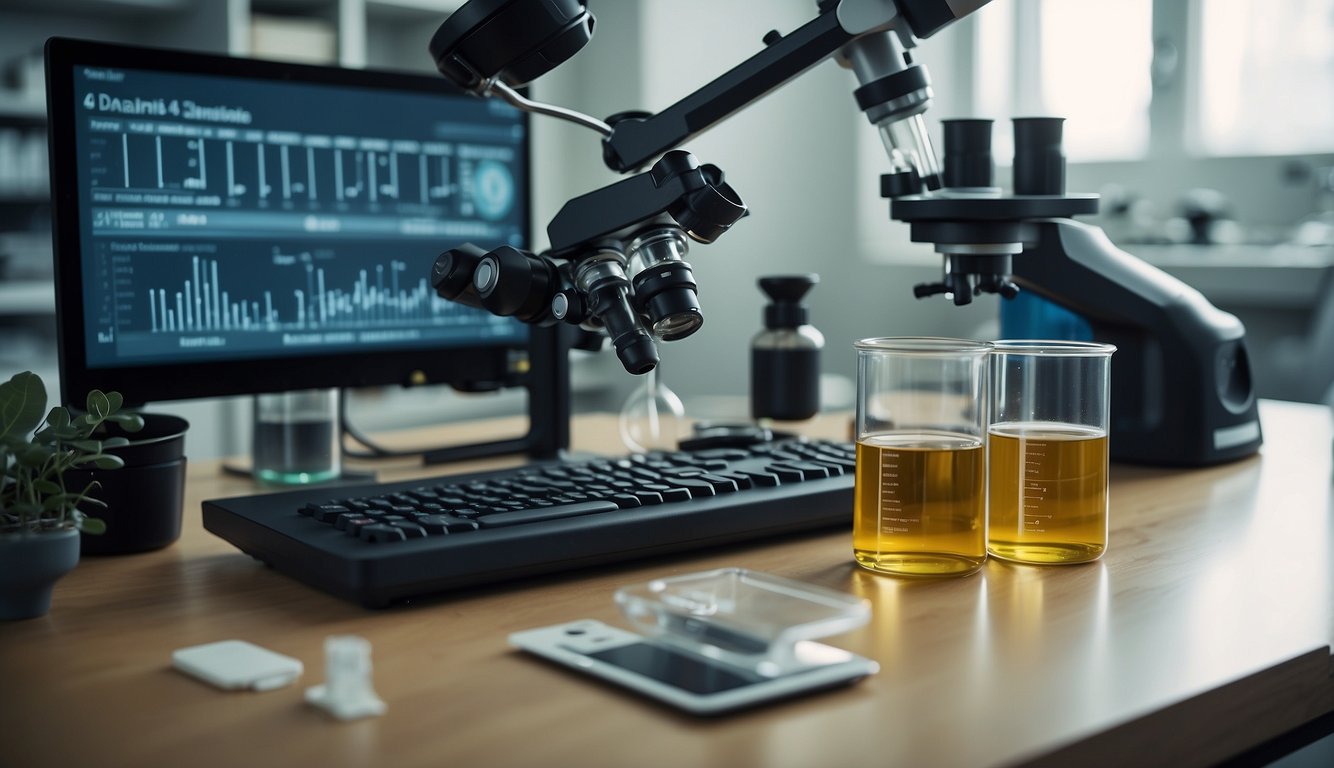
Olive leaf extract has been the subject of numerous scientific research studies and human trials. The following subsections will provide an overview of the findings of these studies.
Cardiovascular Disease Studies
Several studies have investigated the potential benefits of olive leaf extract on cardiovascular health. A randomized placebo-controlled clinical trial conducted on humans found that olive leaf extract supplementation favorably affects outcomes such as blood pressure, glucose metabolism, and blood lipid profiles [1]. Another study on rats found that olive leaf extract supplementation improved vascular and metabolic alterations induced by aging [2]. These findings suggest that olive leaf extract may have a protective effect against cardiovascular disease.
Diabetes and Metabolic Syndrome Research
Research has also been conducted on the potential benefits of olive leaf extract on type 2 diabetes and metabolic syndrome. A review of the scientific literature focused on clinical trials and population studies has confirmed that the Mediterranean diet and the fortification of foods with olive leaf extracts protect significantly against several aging-associated degenerative diseases and cancer [3]. One study on rats found that olive leaf extract improved glucose metabolism and insulin sensitivity [4]. These findings suggest that olive leaf extract may have a beneficial effect on type 2 diabetes and metabolic syndrome.
Cancer-Related Investigations
Olive leaf extract has also been investigated for its potential anti-cancer properties. Evidence suggests that olive leaf extract may hold an even greater potential than olive oil for improving health outcomes [5]. Although there is a large body of research that has investigated the phenolic components of olive products and the benefits they provide to human health [6], there are currently no approved claims in regard to olive leaf extract and cancer. However, studies have shown that olive leaf extract may have a potential role in the prevention and treatment of breast cancer [7].
Cognitive and Neurological Research
Research has also been conducted on the potential cognitive and neurological benefits of olive leaf extract. One study on rats found that olive leaf extract prevented obesity, cognitive decline, and depression [8]. Another study on rats found that olive leaf extract improved brain function and reduced the risk of Alzheimer’s and Parkinson’s diseases [9]. These findings suggest that olive leaf extract may have a beneficial effect on brain health and function.
Overall, the scientific research and human studies conducted on olive leaf extract suggest that it may have potential benefits for cardiovascular health, type 2 diabetes and metabolic syndrome, cancer prevention and treatment, and cognitive and neurological function. However, further research is needed to confirm these findings and determine the optimal dosage and duration of olive leaf extract supplementation.
References:
- The effect of olive leaf extract on cardiovascular health markers: a randomized placebo-controlled clinical trial
- Olive leaf extract supplementation improves the vascular and aging-induced metabolic and vascular alterations
- Olive Polyphenols: Antioxidant and Anti-Inflammatory Properties
- Olive leaf extract improves glucose metabolism and insulin sensitivity in rats
- Evidence to Support the Anti-Cancer Effect of Olive Leaf Extract and Future Directions
- Olive Products and Human Health
- Olive leaf extract induces apoptosis and autophagy in breast cancer cells
- Olive leaf extract prevents obesity, cognitive decline, and depression in high-fat diet-induced obese mice
- Olive leaf extract improves brain function and reduces the risk of Alzheimer’s and Parkinson’s diseases in rats
Consumer Considerations – Before You Go

Choosing Quality Olive Leaf Extract
When purchasing olive leaf extract, it’s important to choose a high-quality supplement to ensure maximum effectiveness. Look for products that are standardized to contain at least 20% oleuropein, the main active compound in olive leaf extract. Additionally, choose products that are free from fillers, additives, and artificial ingredients.
It’s also important to purchase olive leaf extract from a reputable brand that adheres to good manufacturing practices (GMPs) and has third-party testing to verify the purity and potency of their products.
Lifestyle and Diet Compatibility
While olive leaf extract is generally considered safe for most people, it’s important to talk to a healthcare professional before starting any new supplement regimen, especially if you are pregnant or have a medical condition.
Additionally, while olive leaf extract may offer health benefits, it should not be used as a substitute for a healthy diet and lifestyle. Incorporating olive leaf extract into a Mediterranean-style diet, which emphasizes whole foods like fruits, vegetables, whole grains, and healthy fats, may provide additional health benefits.
Finally, olive leaf extract may be helpful for weight management, but it’s important to remember that supplements should be used in conjunction with a healthy diet and regular exercise routine.
Olive Leaf Extract and The Herb Prof: A Natural Connection
Let’s delve into the world of Olive Leaf Extract, a potent herbal remedy, and its unique synergy with our website, theherbprof.com.
Olive Leaf Extract is a natural powerhouse, known for its antioxidant and anti-inflammatory properties. It’s like a wellness warrior in plant form!
But how does this tie into theherbprof.com? Well, we’re all about sharing the wisdom of herbs. And Olive Leaf Extract? It’s one of the herbal heroes we celebrate!
We’re a perfect pair, really. Theherbprof.com provides the platform, and Olive Leaf Extract is one of the stars we showcase. We highlight its benefits, and it brings a wealth of wellness to our readers.
So, when you’re exploring theherbprof.com, make sure to visit our Olive Leaf Extract section. It’s a dynamic duo you won’t want to miss! And remember, laughter is the best medicine, but a little herbal knowledge might just be the perfect sidekick!
References:
Little Herb Encyclopedia, by Jack Ritchason; N.D., Woodland Publishing Incorporated, 1995
The Ultimate Healing System, Course Manual, Copyright 1985, Don Lepore
Planetary Herbology, Michael Tierra, C.A., N.D., Lotus Press, 1988
Handbook of Medicinal Herbs, by James A. Duke, Pub. CRP Second Edition 2007
The Complete Medicinal Herbal, by Penelope Ody, Published by Dorling Kindersley
Before You Go – Check the Following Articles!
Herbal NOW Supplements, Cholesterol Pro™ with Bergamonte™
Check these Categories:
Frequently Asked Questions – Olive Leaf Extract Benefits
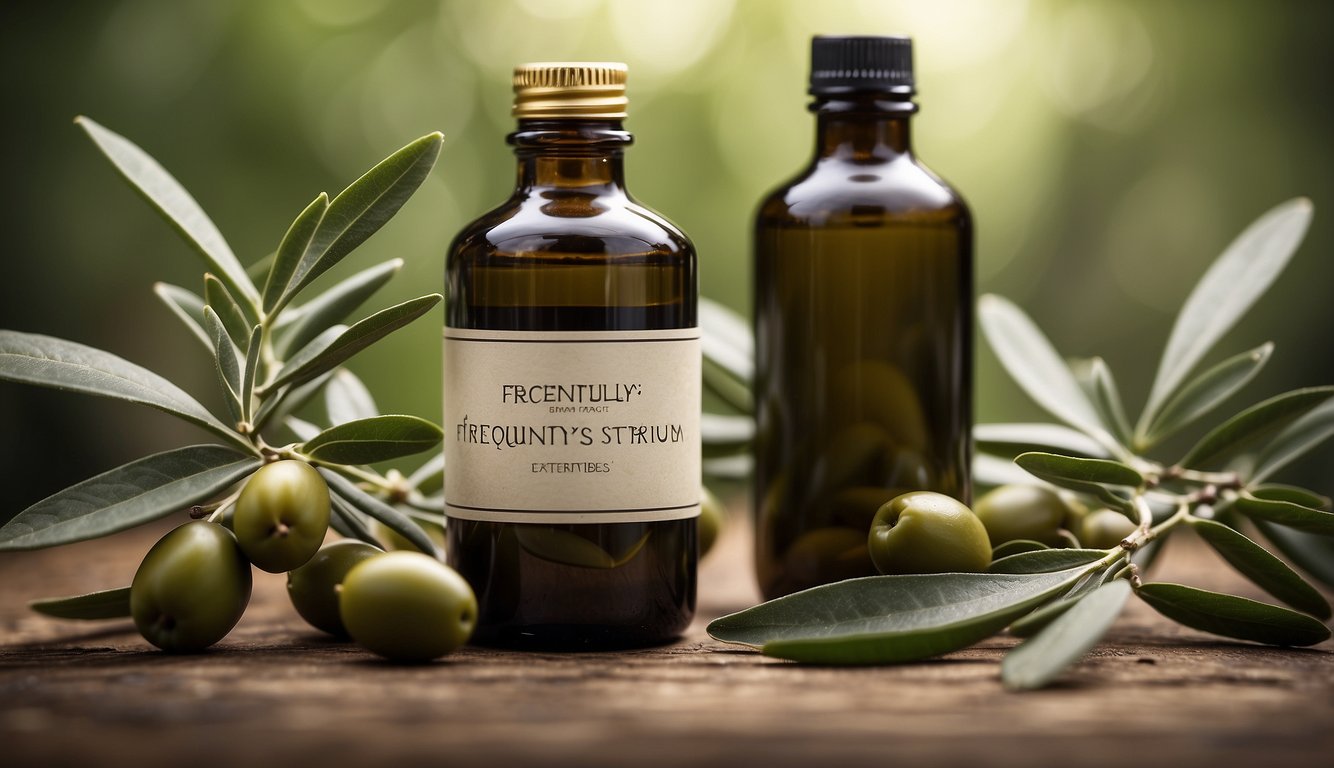
What are the potential skin benefits of using olive leaf extract?
Olive leaf extract contains antioxidants that can help protect the skin from damage caused by free radicals. These free radicals can lead to premature aging and other skin issues. Additionally, olive leaf extract has antibacterial properties that may be helpful in treating acne and other skin infections.
Are there any side effects associated with olive leaf extract consumption?
While olive leaf extract is generally safe for most people, some may experience mild side effects such as stomach upset or headache. It is important to note that olive leaf extract may interact with certain medications, so it is best to consult with a healthcare professional before taking it if you are currently taking any medications.
How does olive leaf extract impact hair health?
There is limited research on the effects of olive leaf extract on hair health. However, some studies suggest that the antioxidants in olive leaf extract may help promote hair growth and prevent hair loss. More research is needed to fully understand the potential benefits of olive leaf extract for hair health.
What precautions should be taken when using olive leaf extract for kidney health?
Olive leaf extract may have diuretic effects, which means it can increase urine output. This can be beneficial for kidney health, but it is important to drink plenty of water to avoid dehydration. Additionally, those with kidney disease should consult with a healthcare professional before taking olive leaf extract.
Can olive leaf extract assist in weight management efforts?
There is some evidence to suggest that olive leaf extract may help with weight management efforts. Studies have shown that olive leaf extract may help reduce body weight and improve insulin sensitivity. However, more research is needed to fully understand the potential benefits of olive leaf extract for weight management.
What respiratory benefits might one experience from taking olive leaf extract?
Olive leaf extract has been shown to have anti-inflammatory properties, which may be helpful in reducing inflammation in the respiratory system. Additionally, olive leaf extract has been shown to have antiviral properties, which may be helpful in preventing respiratory infections. However, more research is needed to fully understand the potential respiratory benefits of olive leaf extract.
